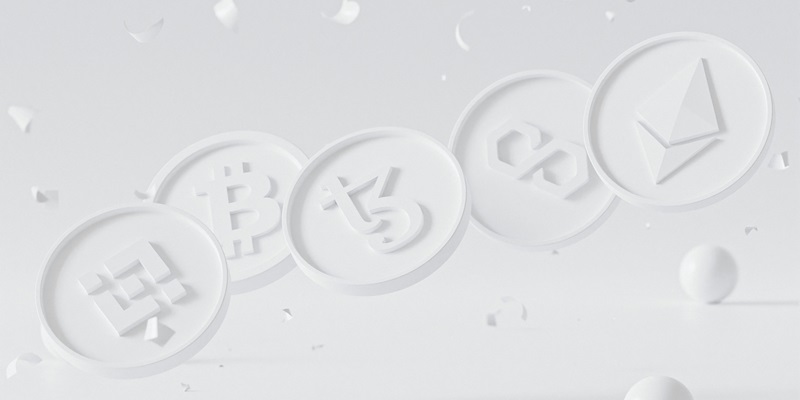Tokenizing U.S. Treasuries and introducing them into the cryptocurrency and decentralized finance (DeFi) ecosystems could transform how collateral is used in these markets. By creating digital representations of U.S. Treasury securities on a blockchain, a new avenue is opened for utilizing these traditionally stable assets within the volatile crypto space.
The Role of Treasuries in Traditional Finance
U.S. Treasuries have long been fundamental to traditional financial markets due to their safety, liquidity, and stability. They function as collateral in various significant financial transactions, including repo markets, derivatives and futures markets, and central clearinghouses. In repo markets, Treasuries dominate with daily transactions between $4 and $5 trillion, offering low-risk and highly liquid collateral. In derivatives and futures markets, Treasuries secure contracts with substantial notional value, supporting annual trading volumes exceeding $100 trillion. In central clearinghouses, they serve as collateral for trillions of dollars’ worth of transactions cleared daily. Treasuries are also utilized extensively in securities lending, amounting to over $1 trillion in outstanding loans.
Current Challenges in Crypto and DeFi Markets
The crypto and DeFi sectors predominantly use volatile assets like Bitcoin and Ethereum as collateral, introducing significant risks due to their price instability. Although stablecoins are another collateral option, they come with their own set of challenges, including opaque yield-sharing agreements that benefit only selected market participants. The inherent volatility and lack of high-quality collateral options have constrained the growth and stability of these markets, making the need for a more reliable alternative increasingly urgent.
Advantages of Tokenized Treasuries
Introducing tokenized Treasuries into the crypto sphere offers numerous benefits. First and foremost, as government debt, Treasuries are much more stable compared to cryptocurrency assets, bringing stability and low risk to the table. Moreover, being on-chain, tokenized Treasuries offer improved transparency over the opaque mechanisms of stablecoins. Blockchain technology facilitates rapid issuance, instantaneous redemptions, and peer-to-peer trading, streamlining traditionally cumbersome processes. These tokenized assets can also fundamentally enhance liquidity and enable yield earning on collateral, even within crypto markets, providing a more efficient and transparent alternative.
Potential for New Financial Products
Tokenized Treasuries not only provide a safer and more efficient collateral option but also pave the way for innovative financial products. Borrowers could obtain stablecoin loans backed by tokenized Treasuries without the fear of extreme volatility, offering more secure borrowing options. DeFi platforms could incorporate Treasuries into their yield strategies, offering secure returns in liquidity pools or lending platforms. Users could also hedge their positions against volatile crypto holdings by collateralizing with Treasuries, reducing overall risk.
Overarching Trends and Future Implications
The trend towards integrating tokenized Treasuries represents a significant convergence of traditional finance (TradFi) and DeFi, leveraging the benefits of stable, trusted assets in a modern financial ecosystem. This fusion is likely to deepen market liquidity, attract institutional capital, and promote more robust participation across both finance domains. As traditional financial instruments merge with blockchain technology, the line between TradFi and DeFi appears to blur, pointing toward a future of hybrid finance.
Conclusion
Tokenizing U.S. Treasuries and integrating them into the cryptocurrency and decentralized finance (DeFi) ecosystems could revolutionize the use of collateral in these markets. By converting U.S. Treasury securities into digital tokens on a blockchain, a new pathway is paved for leveraging these traditionally stable assets within the often volatile crypto space. Tokenized Treasuries would maintain their essential stability and security while gaining unprecedented liquidity and flexibility.
This transformation could potentially bring together the best of two worlds: the reliability of government-backed securities and the innovation of blockchain technology. Investors could benefit from faster, more efficient transactions, as well as increased transparency and reduced counterparty risk. Additionally, it could attract more traditional investors to the crypto and DeFi markets, broadening the user base and promoting further acceptance and growth.
Moreover, the ability to use tokenized Treasuries as collateral could introduce a new level of sophistication in the management of risk. These digitized assets could be easily moved, traded, and used in various DeFi protocols, providing a secure yet flexible option for market participants. Overall, tokenizing U.S. Treasuries represents a significant step forward in merging established financial instruments with cutting-edge blockchain technology, likely leading to more robust and diversified financial ecosystems.

